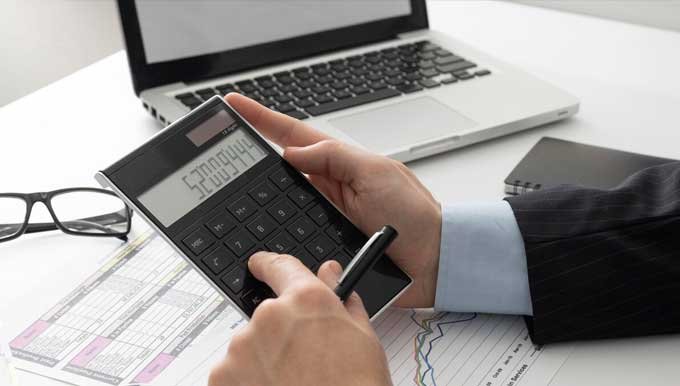Table of Contents
Businesses face urgent liquidity challenges and a clear view of the financial stability is essential to face such situations. The Quick Ratio Calculator from Dexovise is a free tool designed to help you assess your immediate liquidity by comparing your most liquid assets to your current liabilities. Enter your figures into this simple calculator to get an instant result and understand your business’s ability to handle short-term demands.
More Business Calculators
What is Quick Ratio?
The quick ratio, also known as the Acid-test or Liquidity ratio, is a financial metric that measures a business’s capacity to pay off its current liabilities using only its most liquid assets, often called “quick assets.” It serves as an indicator of liquidity, focusing on how well a company can meet its short-term obligations without relying on the sale of inventory. This ratio is calculated by dividing quick assets by total current liabilities.
Quick assets include resources that can be converted to cash rapidly, typically within a short period. These generally consist of:
- Cash and bank balances
- Accounts receivable (money owed by customers)
- Marketable securities (investments easily sold)
Pre-paid expenses and inventory are excluded, as they take longer to turn into cash.
Current liabilities, on the other hand, are the debts and obligations due within one year, such as:
- Accounts payable (owed to suppliers)
- Short-term debts
- Accrued expenses (like wages or utilities)
- Taxes payable
- Current portion of long-term debt
This ratio is significant because it highlights a business’s readiness to cover immediate financial commitments with assets that are readily available, providing a focused perspective on liquidity.
What are the steps to calculate Quick Ratio?
Determining the quick ratio is a straightforward process once you have your financial data prepared. The formula involves dividing your quick assets by your total current liabilities, expressed as:
Quick Ratio = Quick Assets ÷ Total Current Liabilities
To perform this calculation manually, follow these steps:
- Identify your quick assets, including cash, bank balances, accounts receivable, and marketable securities.
- Add these amounts together to find the total quick assets.
- List your current liabilities, such as accounts payable, short-term debts, and accrued expenses.
- Sum these to calculate the total current liabilities.
- Divide the total quick assets by the total current liabilities to obtain the ratio.
For example, if your quick assets total $45,000 and your current liabilities are $30,000, the quick ratio would be 45,000 divided by 30,000, which is 1.50 times.
The Quick Ratio Calculator simplifies this task significantly. You can input your figures directly, whether itemized or as totals, and it delivers an accurate result, rounded to two decimal places, saving effort and ensuring precision.
How to interpret your Quick Ratio?
Once the quick ratio is calculated, it is important to understand what this figure tells about your business. It shows if your business has enough of these assets to cover its short-term debts without waiting for other resources.
A quick ratio of 1 or more means your business has enough quick assets to settle its current liabilities. For example, a ratio of 1.50 tells that your quick assets are one and a half times your liabilities, which is a good sign of being able to pay what’s due. But if the ratio is less than 1, say 0.70, it means your quick assets are not enough to cover what you owe, and you might need to find more cash soon.
Different businesses need different levels of this ratio. A company that gets cash quickly, like a service provider, might be fine with 1.20, while another needing fast funds might aim for 1.50 or higher. Knowing this helps you see if your business can handle its debts right away.
Why the Quick Ratio Matters for Your Business
The quick ratio is a valuable measure because it shows how your business can manage its short-term liabilities with assets that are easy to turn into cash. It shows your liquidity strength in a clear way. The top reasons why this ratio is important are:
- It checks your cash readiness
The quick ratio looks at your cash, marketable securities, and accounts receivable to see if they can pay off liabilities like bills or short-term debts. It shows if you have enough cash ready without counting on slower assets.
- Important for lenders and suppliers
Those who lend money or supply goods want to know if your business has plenty of cash to pay its debts. A ratio above 1, like 1.40, shows you can cover what you owe, making them feel confident about your business.
- It tracks your liquidity position
Keeping track of this ratio lets you notice if your receivables are slow or debts are growing too much. This way, you can fix things early and keep your business steady.
Quick Ratio explained with an example
Looking at an example makes it easier to see how the quick ratio works for a business. The following figures are extracted from a company’s balance sheet.
| Particulars | Amount ($) |
| Quick Assets | |
| Cash | 15,000 |
| Bank Balance | 20,000 |
| Accounts Receivable | 25,000 |
| Marketable Securities | 10,000 |
| Total Quick Assets | 70,000 |
| Current Liabilities | |
| Accounts Payable | 30,000 |
| Accrued Expenses | 15,000 |
| Total Current Liabilities | 45,000 |
Quick Ratio = 70,000/45,000 = 1.56 times
This means the company has $1.56 in quick assets for every $1.00 it owes. If all its short-term debts had to be paid today, the business could use its cash, receivables, and securities to cover them and still have some left.
Benefits of Using the Quick Ratio Calculator
The quick ratio calculator from Dexovise is a tool that helps you find out how your business stands with its cash and near-cash assets. It measures how these quick assets can pay your short-term liabilities.
This calculator gives you a clear number to work with. These are the ways it helps your business:
- It does the counting for you: You put in your cash, marketable securities, and accounts receivable, then your liabilities, and it figures the quick ratio. This saves you from doing it by hand.
- It tells about your cash strength: The calculator shows how your quick assets match up to what you owe, so you can see if you have enough cash ready or if something needs attention.
- It aids in making plans: When you know this ratio, you can think about what to do next, like paying off debts or holding off on big spending—based on the cash you have.
This tool is useful because it tells you quickly if your business has the cash it needs, and it makes planning simpler.
How to improve Your Quick Ratio
Working to make your quick ratio better is a step that can strengthen your business’s cash position. When you improve quick ratio, your business has a better chance to pay what it owes under current liabilities. Here are some of the steps to improve your quick ratio
- Add to your quick assets: Get more cash coming in by selling more or asking customers to pay their bills faster, so you have more money to use right away.
- Lower what you owe: Pay some of your accounts payable if you can, or ask suppliers to wait longer for their money, which cuts down your short-term debts.
- Collect receivables sooner: Set rules to get customers to pay quicker, maybe with a small discount, turning those receivables into cash you can use now.
These steps are worth doing because lenders and suppliers look at this ratio. They want to know if you have more than enough cash to pay your debts, and a higher ratio shows them your business is strong.
Quick Ratio Compared to Other Liquidity Metrics
Each liquidity ratio tells you about paying your short-term liabilities, but they use different assets. They gives you a wider look at your cash situation. The major differences are:
| Metric | Formula | Includes | Focus |
| Quick Ratio | (Cash + Securities + Receivables) ÷ Current Liabilities | Cash, securities, receivables | How cash-ready you are without inventory |
| Current Ratio | Current Assets ÷ Current Liabilities | All assets, even inventory | Your full ability to pay debts |
| Cash Ratio | (Cash + Cash Equivalents) ÷ Current Liabilities | Only cash and equivalents | Just the cash you have right now |
These measures matter because they show your cash position in different lights. The quick ratio checks what you can pay fast, leaving out inventory that takes time.
The current ratio looks at all your current assets, while the cash ratio sticks to cash alone. This helps you understand your business’s money from every angle.
Explore More with Dexovise
Seeing your quick ratio is a good way to start managing your cash better. Look into more tools and services at Dexovise to help your business grow strong and steady.




